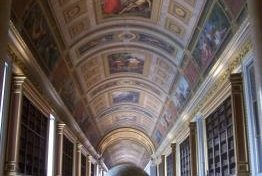
I did enjoy my trip out to the palace and it was a rewarding visit. It didn't feel quite as cripplingly oppressive as Versailles and was a more manageable place to get a grasp on. The level of decoration was also impressive throughout, especially the two grand corridors that we visited on the tour. Also the associations with Napoleon are pretty strong here which helped ties in some of the parts of French history that I had a decent grasp of. I also enjoyed strolling around the grounds to get a bit of fresh air.
On the whole it was a worthwhile side trip from Paris, and it was good to spend some time exploring with my friends. It was also pretty easy to get to, but I must admit Palaces very rarely capture me.
[Site 5: Experience 4]
Keep reading 0 comments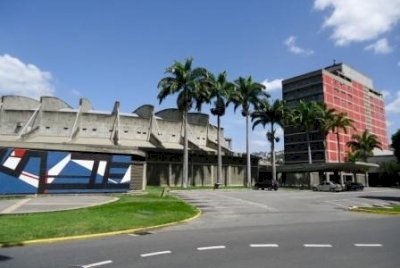
Site visited in March, 2011. Easy accessibile (close to a metro station), the whole area due to its university status looks pretty safe (at least during the daytime), security was the main concern while visiting Venezuela. At first it looks a little bit dissappointingly - all the buildings are made of concrete, they are modern (in terms of architecture style) but after a while you can spot that it is really an entire complex of different buildings but designed in the same manner. Architecture is simple but practical, some solutions are spectacular (those passages allowing students to walk in shadow during sunny days). So for me the place is interesting although I know that some people may be dissapointed.
Keep reading 0 comments
This site sees an unbelievable 400,000 to 500,000 visitors a year. All travel for hours just to see these rocks in the desert. You can fly in from Australia's major cities, or drive from the next city Alice Springs (445 km away). I did the latter, visiting Uluru on an overnight trip and staying in the resort town of Yulara. Yulara itself is a sight to behold: it was only developed in 1975 to keep the tourists out of the park. It has just one loop road, a couple of hotels, restaurants, a petrol station and a supermarket. All are owned by the monopolist Ayers Rock Resort, which keeps prices sky-high. I paid 175 EUR for a night in a budget room at the Outback Lodge, the cheapest of the 4 hotels in the area. The room came with a spray to kill resident pests. I used it.
After dumping my backpack at the lodge, I drove straight on to Uluru. Somehow you get the feeling here that there is no time to lose as if The Rock is calling for you. On the way up I stopped at the Cultural Center for an introduction. It has exhibits about the Aboriginal traditions surrounding Uluru. Like in Kakadu NP, I found these stories and what they involve hard to grasp.
Finally, I came to the base of the rock. I had a strange sense of arriving at somewhere very remarkable, a WHS with a real Wow!-factor. The attraction is …
Keep reading 0 comments
After now having visited Sydney Harbour including the Opera House, I find it a pity that the nomination that finally got succesful in 2007 only covers the Sydney Opera House. Sydney's Harbour is its greatest asset, both as a magnet for immigrants in the past and for its picturesque setting. The Opera House is a single great building of course, but I was more impressed by the Harbour Bridge.
I "did" Sydney on a half-day bike tour. It took us all along the different quays, over various bridges but always with the fabulous harbour view in sight. The fish market was a worthy stop for a fresh snack.
We cycled around the Opera House too of course. From up close it is more visible that is actually made of 3 sets of "shells" (it looks like one structure from afar). After having read the reviews below, I had decided not to spend another 35 AUS dollar for a tour inside. The complex is very "open" anyway, it is a public building that is used by many.
Keep reading 0 comments
I visited the southern half of this serial nomination: Naracoorte Caves. It is located 10km south of the town of Naracoorte, some 5 hours drive from Melbourne. Quite a remote location – but it does see its fair share of visitors. There were about 40 other cars in the parking lot when I arrived there on a weekday afternoon. Be aware: the caves are located in the state of South Australia, which has a half an hour time difference from eastern states like Victoria (it’s half an hour earlier here than in Melbourne).
Visits to the most interesting caves are guided tours only. They conduct several of them during the day. Most popular is the Bat tour, where you can watch the large bat population. However, I had arrived just in time to join the Fossil tour. This takes you into Victoria Fossil Cave, the one cave that has earned Naracoorte its WH status.
This Cave is 1.5 km away from the Visitor Centre. It’s a limestone cave about 500,000 years old. It has a variety of dripstone features, and it holds the first fossil bed found at Naracoorte. Later on, they discovered more of them, in other caves too. The animals got trapped here after they had fallen through holes in the surface. The fossil bed is as big as an Olympic swimming pool. It still has a lot of bones in it. The skeletons of two of the most impressive species found here have been put …
Keep reading 0 comments
The Blue Mountains had a tough time getting into the List. The site was deferred once, and the next year the IUCN advised deferral again. “We can’t have a WHS based solely on its eucalyptus trees, can we?” was their argument. And anyway, there are eucalyptus trees all over Australia, also in parks that are already WHS. The WH Committee thought otherwise, possibly helped a little by the fact that Australia (Cairns) was hosting the Meeting that year. And after promising that it would look after the eucalypti well, Australia was given its souvenir WHS.
For my visit to this WHS, I stayed for 2 nights in the town of Katoomba, the largest in the area and 2 hours away by train from Sydney Central. The town is all faded glory, reminding me of visits to the High Tatra in Slovakia or Rhine cruises in Germany. Tourism once was big here, but although I visited during the Easter school holidays most of the hotels/motels/b&b’s had ample rooms available.
From Echo Point, the main viewing point over the valley, the surrounding mountains, and the Three Sisters, I hiked down via the Giant Stairway. Like Ian reported below in his review, I did not find it tough although the walk is labelled as "hard". Over the past weeks, I often experienced here in Australia that the signs are overstating the difficulty or the time that it will take to finish a particular hike. It's probably to deter the totally unprepared. …
Keep reading 0 comments
I visited Kakadu in early April, and it was still very wet. It had rained extensively over the past months, and most of the roads were closed due to flooding. Only the two main roads through the park, the Arnhem Highway from Darwin east to Jabiru and the Kakadu Highway from Jabiru south to Pine Creek, were open. It was still raining slightly during the two days I spent in the park. Fortunately, two of the best things to do in the park are open in the wet season too: Nourlangie Rock and the Yellow Water Cruise.
Nourlangie Rock is located a few km from the main Kakadu Highway. The road to it is sealed, and it leads up to the large sandstone escarpment that cross-sects the park – so it is accessible all year round. There are a couple of short hikes you can do here. I did the loop walk, which takes you past the various rock paintings. Their setting is similar to those at Bhimbetka in India, which I saw earlier on this RTW trip: they are under overhanging rocks or rock shelters. The quality of the paintings is pretty spectacular, and the images are different from rock art elsewhere in the world. Of course, they display typical Australian animals like kangaroos. Several of the paintings are large images of aboriginal spiritual beings. There’s also “contact art”: paintings made after contact with European explorers, for example in the form of a gun.
The Yellow Water …
Keep reading 0 comments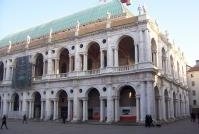
I really love the art there. However, it's really a pity that we could only visit 3 rooms, while you have to pay still 5 euro per person(Fortunately, the Bikini girls is included). According to the people there, they need 2 more years to finish all of the rebuild. Thus, if you have more time, i would strongly recommend to go there later.
Visit time: 7, April, 2011
Keep reading 0 comments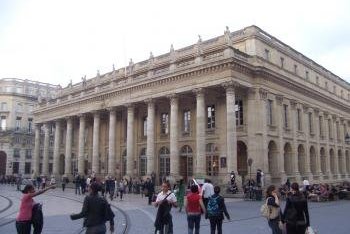
I found Bordeaux to be a great, medium sized European city, though it has some lovely buildings there are no real stand out monuments. The large uniform buildings do not seem to be over-powering and the streets are reasonably sized so it doesn't feel intimidating like Paris sometimes can. For me one of the real joys of travelling in Europe is losing time in great cities like this, they do not have the masses of tourists like the continents star attractions but still showcase the architecture and lifestyle that make this such an interesting part of the world to travel in.
My first view of the city centre was the broad sweep of buildings facing the river, from here it is easy to understand the moon shaped layout of the city centre. Perhaps my highlight was strolling aimlessly along St Catherine Street watching everyone else doing pretty much the same. I also enjoyed a lovely wine-tasting session, allowing me to sample the region's most famous export. I would like to suggest this was a cultural quest to get myself better acquainted with the product that led to the development of such a grand port, however I would be lying, it was just because there are few things like more than relaxing with a glass of wine, a newspaper and a plate of cheese in a foreign city.
Bordeaux also deserves top marks for the way in which it has presented its city centre. Obviously a lot of time and money …
Keep reading 0 comments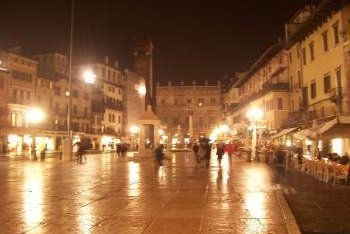
I really enjoyed my brief visit to Verona. There were plenty of impressive buildings to visit however we had most fun just walking along the busy streets eating ice creams and looking in the shop windows.
My visit was rather brief and I would happily go back for a longer visit. I really enjoyed seeing the continuation of the buildings in the city. From the impressive Roman amphitheatre, through to small medieval churches, large renaissance structures and plenty of modern delights. Perhaps my favourite thing was the Pietra bridge which offered lovely views across the city. I also really enjoyed sitting down on the Piazza delle Erbe for a wonderful bowl of the local speciality gnocchi.
I would happily go back to Verona for a longer stay, there seemed to be plenty to see and do, and there was a nice ambiance to strolling through the streets.
[Site 6: Experience 6]
Keep reading 0 comments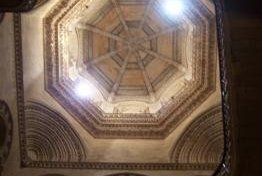
I love travelling by train, and I also have a love of architecture; as such entering train stations is always a special sensation for me. I decided to throw myself in at the deep end with this site, and booked myself onto a sleeper-train on my first night in India. I therefore had to rely on VT as my base during my first taste of the country.
I was delighted to be dropped of from the airport at a place that seemed incredibly familiar to me, not only because I have seen so many pictures of it but also because it looks like it could be in London. The comparison with St Pancras is very obvious, VT is obviously used much more frequently and has loads of character, this has led to the dull/ ugly extension to the station, and the main shed is nowhere near as awesome as the magnificently restored example at St Pancras. However VT has a massive buzz and energy about it. I really enjoyed going to the food stall and ordering a masala dosa, (perhaps my favourite meal in the world) getting change from €0.40 and elbowing my way to a counter top to tuck in. It was also fun to walk up to the bridge over the commuter trains and watch them decant an astronomical amount of people into the station, happy with the knowledge that I wasn’t caught up in the rush. The whole fort area of Mumbai was littered with buildings …
Keep reading 0 comments
I'm Italian (from north Tuscany) and I've visited most of the historic centres of northern Italy medieval towns.
I reached Modena only because is on the List and, after visiting, I could say that this is, by far, one of the most poor and totally overrated WHS.
The Duomo is nothing special, very small and under refurbishment by decades, although the inside is nice (and free, not so usual in Italy).
The Piazza is one of the ugliest of italian's "comuni": there is NOTHING, not even a nice Town hall, so common in this part of Italy.
For me it was a short ride from home, but for foreign visitors, allow maximum half an hour to visit Modena.
In conclusion, I still don't understand why that church and that piazza are on the list, assuming that Lucca, Parma, Sarzana, Pietrasanta ect. are, by far, more impressive and with more historical and architectural significate.
Keep reading 0 comments
Our previous visit to Victoria Terminus had been from the “business-end” – arriving on an overnight train from Aurangabad in 1996. The site wasn’t WHS-inscribed at the time and we were more concerned with the logistics of an unplanned early morning arrival into teeming Bombay (getting a taxi, finding a hotel etc) than in admiring the architecture – although its general grandeur was noticed as we passed through!! So, on our first return since its inscription in 2004, we made a special visit to see what we might have missed.
As other reviewers have noted, there is not a great deal to see beyond the exterior. The original Booking Hall, known as “The Star Chamber” because of its marble gothic columns and archways, is impressive but, in all honesty, seemed to us a bit “small” in comparison with the size and importance of the entire structure. Of course Indian railways and their passenger numbers have grown significantly since the original station was started in. 1878 Originally the station was built with just 4 (or 5?) platforms and another station (not within the inscribed area) was built alongside in 1929 with another 12 or so. Today this “new” station handles long distance trains with the “old” station and its booking office handling suburban commuter services. Beyond the booking hall the platform and concourse areas behind the main building still contain some fine wrought iron work. Otherwise one can only try to pick up the detail of the exterior decoration (Photo). The …
Keep reading 0 comments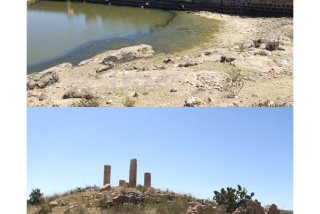
The addition of Qohaito (UNESCO says “Qoahito”) to Eritrea’s T list in Mar 2011 came as something of a surprise to us as we had visited it in late 2006 without being particularly impressed. Of course the site is in a very undeveloped state with very little having been excavated and its significance may well be much greater than its visible remains might indicate!
Interestingly, Eritrea now seems set on nominating it as a cultural landscape covering, inter alia, the archaeological remains of a city dating from around 100-700AD (and, possibly much earlier), together with cave paintings of various periods and today’s landscape as traditionally farmed by the Saho peoples set on a high plateau next to an impressive steep escarpment dropping 2500mtrs to the Red Sea. Indeed the T list description refers with some justification to the “dramatic natural features and great scenic beauty”. Now “Cultural Landscapes” have recently been a successful route for African countries to gain inscription, but the T List description of this site gives the impression of an unfocussed, catch-all approach clutching at anything which might have some significance/value!
Tourists to Eritrea didn’t/don’t visit anywhere outside Asmara without special “permission”. Whilst we were there, the xenophobic and paranoid government had even more reason for suspicion of foreigners as its long term enemy, Ethiopia, was engaged in invading Somalia in support of the Transitional Federal Government against the Islamic Courts Union (ICU) and Eritrea was supporting the latter. We had left Asmara …
Keep reading 0 comments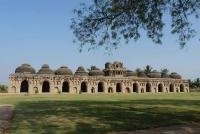
If you are liable to get “Templed out” by a surfeit of historic ruins it could happen to you here! The site consists of the monumental remains of an entire city from the 14th century covering some 25 sq kms and takes at least a full day to achieve a reasonably “comprehensive” visit. Some will want to stay several days but 1 was enough for us – you will know how “fast” you like to travel! A few of the structures are of particular architectural/artistic significance but I guess what makes the site “special” is its location within a striking boulder-strewn landscape and a very relaxed uncrowded atmosphere. It appears to be something of an R+R destination among the back-packer community and I can imagine people all over India agreeing to meet up at the Mango Tree restaurant – we felt very old there! It is also within reach of package tour overnighters from Goa, but the place seems big enough to take them all. And yes, we found it a worthwhile visit, if not of the most memorable of our Indian WHS.
You will need to consider how you are going to cover these distances – are you comfortable walking in the sun or do you want to rent a bike/motor bike etc. Some slightly incongruous electric vehicles have recently been acquired by the management authority to transport tourists to/from the Vitthala Temple but, to us, only seemed geared to taking them to/from their car park!! We had a …
Keep reading 0 commentsEsteban Cervantes Jiménez
National archeological park of Guayabo de Turrialb
National archeological park of Guayabo de Turrialb (Removed from tentative list)
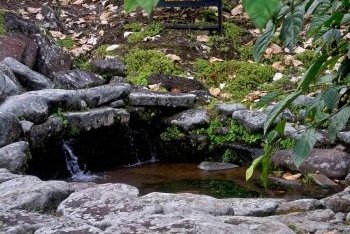
This is really worth a visit when you come to Costa Rica. It is almost unique not only because the indigenous communities in Costa Rica did not create sites not even far as grand as the ones created in northern Central America or Mexico, but also because in this country there has not been an adequate protection to archaeological remains, it happens the same as historic buildings, if a private owner finds some archaeological remain in the lot he is planning to build a supermarket, a hotel, a plantation, a road or anywhere else, quickly and silently bulldozes it before the archaeologists of the National Museum appear. Guayabo could have suffered the same destiny because it is located in a very fertile area in Turrialba highlands, eastern Cartago province, but late archaeologist Carlos Aguilar Piedra started back in the 60s regular excavations and campaigned to protect the site, already sacked and vandalized. As a site, it is small (4 ha), but the excavations have come just to the point that the government owns and it is believed that the site extends up to 15 or 20 ha.
The site culturally belongs to the intermediate zone, influenced primarily by the Chibchas and other cultures to the south, but having contact through Guanacaste to the Mesoamerican cultures.
The main features of Guayabo are the mounds that indicate through their size, height and location, the importance of the character that lived there on the mound. The houses were made of wood and organic …
Keep reading 0 commentsIvan ManDy
Temple, Mansion and Cemetery of Confucius
Temple, Mansion and Cemetery of Confucius (Inscribed)
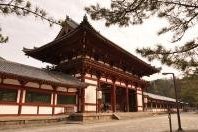
We were lucky to have a very accommodating and knowledgeable guide (a big plus being able to speak our language) which is perhaps why I really appreciated this place.The whole complex is really a tribute to Confucius and his (priviledged) descendants who were lavished upon by the succeeding imperial rulers just because of their familial links to the great sage himself. Being of Chinese ancestry, standing in front of 'supposed' grave of this philosopher really strikes you to the core and makes you remember all the things which you learned from school
Keep reading 0 comments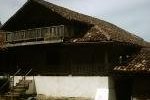
Outside the central valley, the most important area in the colony was present day western Guanacaste province that back in those days was known as the Partido de Nicoya. From the pre-Columbian times it had already a distinctive cultural input from the rest of the country, since it culturally belonged to the Mesoamerican region, having contact with Maya and Aztec cultures, but with particular features. When Spanish explorer Gil González Dávila reached the capital of Nicoya chiefdom (or cacicazgo) saw that the city included several pyramids and a temple, which have not survived to present day. It has not been demonstrated if the Spanish town was super imposed to the chorotega one and the church was located on the pyramid, or it was located in a nearby site called Sabana Grande, but the fact is that Nicoya parish was established by the Franciscan missionaries between 1522 and 1544, being the fist Spanish permanent town in all of present day Costa Rica. Since then to republican times, Nicoya was the capital of the partido de Nicoya, which decided to annex to Costa Rica in 1825.
About the building (located in http://sketchup.google.com/3dwarehouse/details?mid=e4c4fc5752ab6d497e38810f6923de53&hl=es&ct=lc), it is simple, two-storey high, does not have a tower but has instead a bulrush, and it is immaculately painted with white lime, an architectural style present in colonial churches of Nicaragua. The church is believed to be built in 1644, was damaged by strong earthquakes in 1822 and 1950, but has been repaired, it presently serves as a museum …
Keep reading 0 comments
Grand is the word to describe this palace. From the outside, one is overpowered by its sheer size and immensity, the interior however is very austere and your initial idea of a palace is of 'Baroque splendor' (like mine was), the Escorial may leave a lot to be desired
Keep reading 0 commentsEsteban Cervantes Jiménez
Santa Rosa historic mansion
Santa Rosa historic mansion (Removed from tentative list)

As a monument of national significance, Santa Rosa hacienda represents a tradition that formed what would become the province of Guanacaste, in the northwestern part of the country. That was the dedication, from colonial times, of these extensive, generally plain, dry terrains to cattle breeding. Santa Rosa, which started in the 17th century, was one of the richest ranches and became part of the culture of the “sabanero” or cowboy, fundamental part of the cultural specificity of the Guanacaste lowlands. But the most important fact for which this ranch is know is the fact that in 1856, on the verge of an invasion from Nicaragua by what are known as the filibusters, a heterogeneous group of American and European pro slavers that came to Central America to create a branch of the American south, believed in a racial superiority, and pretended to built the canal between the Pacific Ocean and the Caribbean Sea. Those had taken the control of Nicaragua and were ready to continue invading the rest of countries, but Costa Rican president Juan Rafael Porras organized and armed an army composed mainly of peasants, which defeated on March 20th the invading army.
The building is of extreme importance for those two facts, and its surrounding guard reminders of both its agricultural functions, such as the instruments, the livestock pens and the rests of the different battles that took place here between 1856 and 1955. The ranch was the starting point from which in the 60s Santa Rosa became …
Keep reading 0 comments